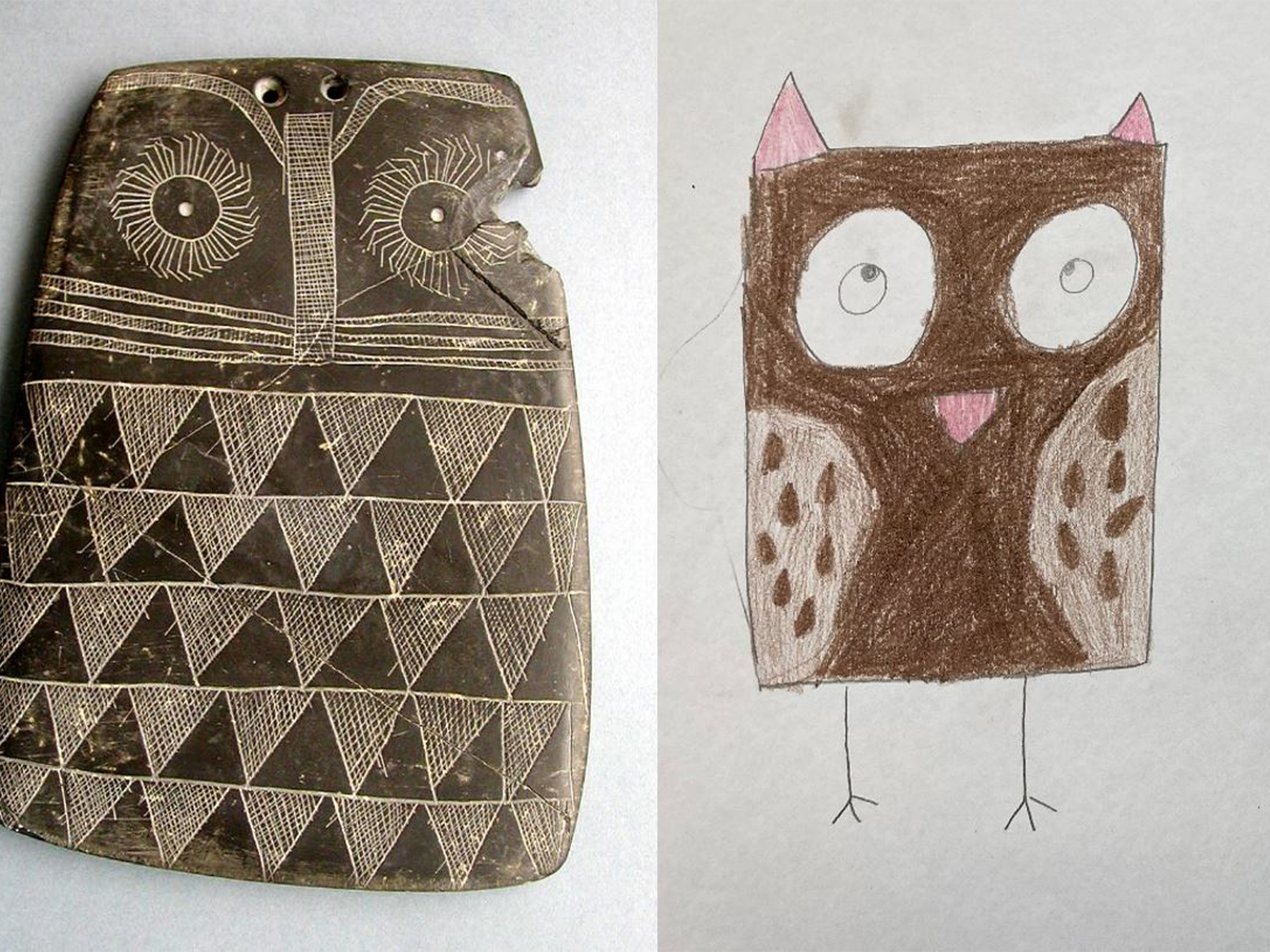

Owls have long been beloved animals representing wisdom and knowledge—just think of Mr. Owl eating Tootsie Pops for science or the Owl counseling Winnie the Pooh. Thousands of years ago, it seems people were celebrating owls as well by creating copper engravings of the birds on art found on the Iberian Peninsula.
A team in Spain examined 4,000 engraved slate plaques that resemble owls, showing two engraved circles for eyes and a body, that date to the Copper Age (between 5,500 and 4,750 years ago). The plaques were found in tombs and pits across Spain and Portugal, and the discovery is outlined in a study published last week in the journal Scientific Reports.
[Related: What ancient graves can teach us about the history of inequality.]
“The resemblance of this type of plaques with the owl species present in the region is more than evident,” study co-author Víctor M. Díaz, an art historian from the Universidad Complutense de Madrid, says in an e-mail to PopSci. “This, together with the possibility that they were used by the youngest as dolls or toys, led us to think that perhaps they were objects made by children in a learning context to later use them in their games.”
The team examined 100 of the plaques and rated them on a scale of one to six based on how many of six owl traits they displayed. The traits included two eyes, patterned feathers, feathery tufts, a flat facial disk, wings, and a beak. They then compared 100 modern images of owls drawn by children age four to 13 with the plaques.
“The similarity of these plaques with the drawings made by children of our day is very remarkable,” says Díaz. “One of the things that they reveal to us about the children of that time is that their vision of what an owl is is very similar, if not identical, to what children of today have. They would also be proof of how certain useful skills for daily life can be acquired in a learning context that is not necessarily productive.”
The drawings also more closely resembled owls as children aged and their motor skills likely improved.
There were also two small holes at the top of many of the plaques, but the team does not believe that these were used to hang the owl-plaque like a modern parent might put a child’s drawing up on the refrigerator. Instead, it’s possible that feathers could be placed there to better resemble the feathery tufts on the heads of some regional owl species, such as the long-eared owl (Asio otus).
[Related: Climate change is threatening archeological treasures from Alaska to Egypt.]
It’s possible that these plaques had a few different roles from a toy to an object used in rituals or an image of a deity from the time or as a teaching tool. Plaques like these would have kept kids busy, while also teaching them a valuable skill, and could even have been a way for the adults at the time to identify future stone carvers.
It also connects modern life with prehistoric life, especially in showing that both societies have playful sides and care about aesthetics.
“Our proposal proves that we are not so different from our ancestors,” says Díaz.
